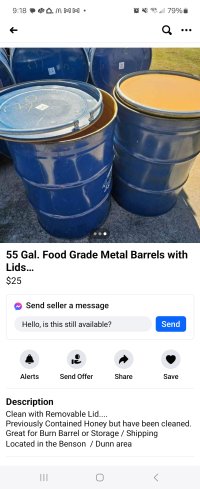Austin Willoughby
Willoughbeast
- Joined
- Jul 25, 2018
- Messages
- 41
- Reaction score
- 12
Alright so ik the primo questioned has been asked numerous times and before everyone jumps all over me about searching I did a quick search on here and Google and couldn't find anything about aging in them only about fermenting.
So my question is for bulk aging would it be ok for around a year potentially 2? Ik some of the primo material is air permeable. Keeping in mind this will be for aging 10-16 percent wines with no carbonation before bottling.
My thoughts are this. My sink water is trash with lots of rust and chlorine so I can purchase three 5 gallong jugs at a time for making around 14 gallons of wine. This will be around 15 bucks or 7.50 dollars for the water and 7.50 dollars for an aging vessel. I'll then use the same jugs to age after brewing in my fermizilla which will have a 3 step process. 1 month ferment. 1 month bentonite clear and then 1 month standard clear before bottling. All the aging buckets seem to be 10-20 bucks.
Btw I've been buying mineral water by the gallons for aprund 1.50 a gallon to just have to toss the jugs.
Thoughts?
Posted original thread in wrong forum
So my question is for bulk aging would it be ok for around a year potentially 2? Ik some of the primo material is air permeable. Keeping in mind this will be for aging 10-16 percent wines with no carbonation before bottling.
My thoughts are this. My sink water is trash with lots of rust and chlorine so I can purchase three 5 gallong jugs at a time for making around 14 gallons of wine. This will be around 15 bucks or 7.50 dollars for the water and 7.50 dollars for an aging vessel. I'll then use the same jugs to age after brewing in my fermizilla which will have a 3 step process. 1 month ferment. 1 month bentonite clear and then 1 month standard clear before bottling. All the aging buckets seem to be 10-20 bucks.
Btw I've been buying mineral water by the gallons for aprund 1.50 a gallon to just have to toss the jugs.
Thoughts?
Posted original thread in wrong forum
Last edited:




